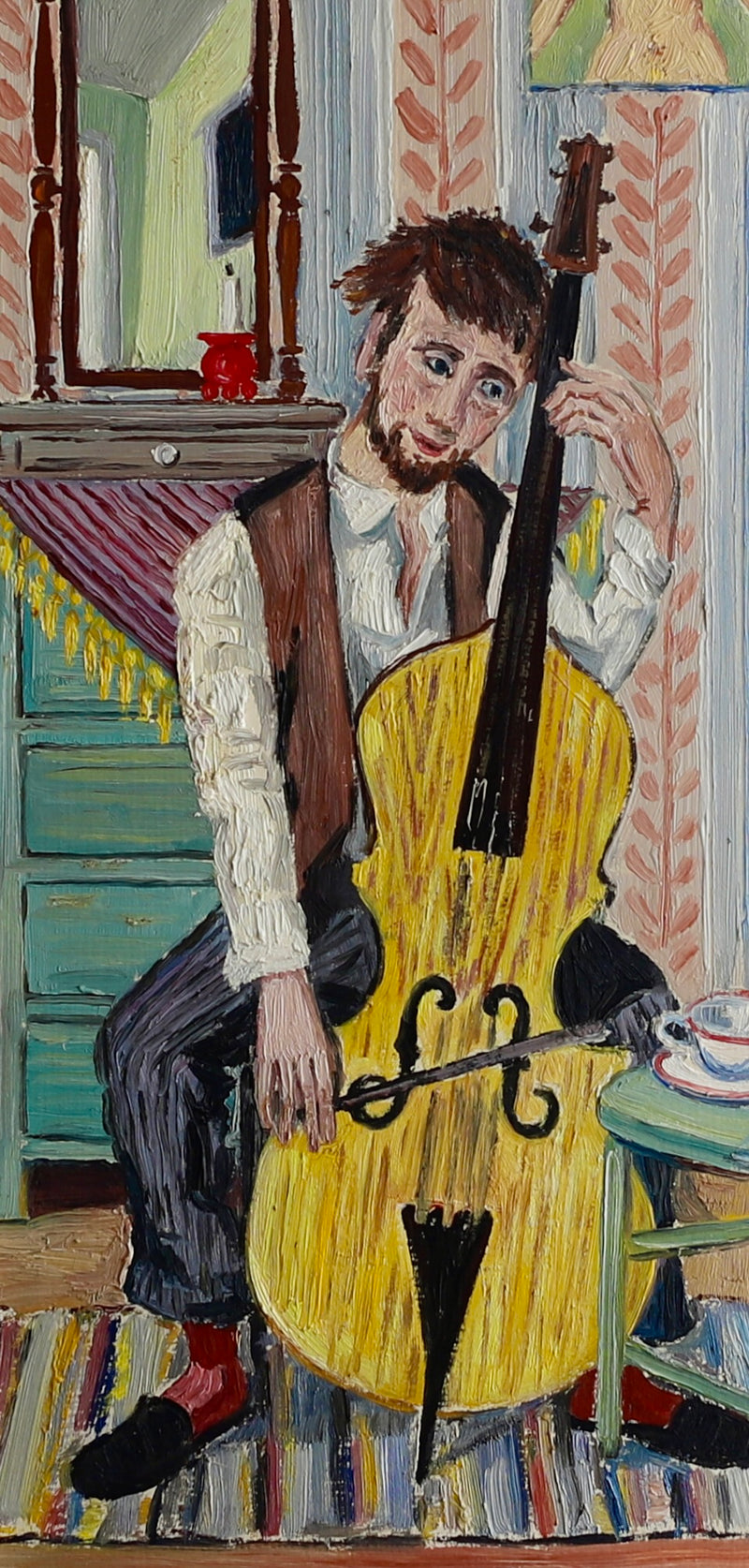A Journey Via the Globe of Figurative Oil Painting: Discovering the Special Attributes and Emotional Depth of the Tool

History of Figurative Oil Paint
Emerging throughout the late Middle Ages and flourishing throughout the Renaissance, metaphorical oil paint has a rich history that mirrors both artistic advancement and social advancement. Oil paints were used in Europe as a method to enhance the luminance and deepness of color in artworks. Musicians such as Jan van Eyck originated the medium, demonstrating its potential to catch elaborate details and appearances, therefore allowing for an extra realistic depiction of the human type.
As the Renaissance advanced, prominent figures like Leonardo da Vinci and Michelangelo broadened the borders of metaphorical oil painting. They stressed anatomical accuracy and perspective, developing jobs that shared feeling and narrative depth. The medium's convenience allowed for testing with light and shadow, bring about the growth of chiaroscuro strategies that further improved the visual experience.
Unique Attributes of the Tool
The advancement of figurative oil paint has been substantially influenced by the one-of-a-kind features of the tool itself. Oil paint, made up of pigments suspended in oil, supplies musicians a remarkable flexibility that enables a wide variety of structures and coatings. Its sluggish drying out time allows careful blending and layering, which can develop depth and luminosity unattainable in various other mediums.
In addition, oil paint's abundant coloring supplies vibrant colors that keep their intensity in time. This characteristic is critical in figurative paint, where capturing the nuances of skin tones and psychological expressions is extremely important. The capacity to achieve soft transitions and refined slopes boosts the natural high quality of topics, allowing musicians to convey complicated emotional states.
Additionally, oil paint sticks well to different surfaces, such as canvas, steel, and wood, broadening the extent of imaginative expression. The tool's adaptability supports various approaches, from comprehensive realism to expressive brushwork, allowing artists to discover their individual styles.
Eventually, the special buildings of oil paint not just enhance the visual experience but also empower artists to connect extensive narratives, making figurative oil paint a deeply expressive art type.
Designs and methods Employed
Within the world of metaphorical oil painting, musicians use a varied array of techniques and designs that contribute to the deepness and richness of their job. One prominent technique is polishing, where clear layers of paint are applied over dried out layers, enabling light to permeate and mirror, enhancing luminosity and deepness. This method is often made use of to achieve a feeling of realism and intricacy in skin tones.
Another strategy is impasto, where thick layers of paint are applied with a scheme knife or brush, developing a textured surface area that adds a three-dimensional top quality to the painting. This design can evoke a natural reaction, attracting the audience in via its tactile nature.
Artists additionally explore numerous brushwork styles, from penalty, detailed strokes that catch intricate functions to more comprehensive, a lot more meaningful strokes that convey activity and emotion (figurative oil painting). The option of shade palette substantially influences the general state of mind of an item, with warm tones commonly imparting sensations of convenience and awesome tones recommending moody
In addition, the combination of chiaroscuro, the comparison in between light and shadow, allows musicians to develop dramatic impacts that improve the narrative top quality of their work. Each technique and style is carefully chosen to raise the visitor's experience and understanding.
Psychological Depth in Figurative Art
Emotional depth offers as a keystone in metaphorical art, allowing artists to transcend mere representation and engage customers on an extensive level. This psychological vibration is often achieved through the nuanced portrayal of human figures, expressions, and interactions. Artists harness the power of darkness, shade, and light to stimulate sensations that reverberate deeply with the target market, developing a natural link to the subject.
In figurative oil painting, the intricate layering of paint can reflect straight from the source the complexities of human feeling. The selection of scheme, whether warm or awesome, plays an important role in setting the state of mind and ambience of an item. For example, softer colors may evoke tranquility and self-contemplation, while bold, different shades can interact tension and dramatization.

Influential Artists and Their Functions
Numerous prominent musicians have actually substantially formed the landscape of figurative oil paint, each adding distinct viewpoints and techniques that remain to motivate contemporary creators. Amongst these musicians, Lucian Freud stands apart for his extreme emotional depth and raw portrayal of the human type, usually obscuring the lines between charm and degeneration. Freud's jobs, characterized by thick, impasto brushstrokes, invite customers to challenge the intricacies of identity and vulnerability.

In A Similar Way, Andrew Wyeth's thorough realistic look in pieces like "Christina's World" captures profound stories within apparently basic make-ups. His use light and darkness stimulates a sense of important site nostalgia and psychological vibration, drawing viewers into the intimate globes he portrays.
In the world of modern-day art, Kehinde Wiley has actually acquired recognition for his vivid, epic portraits that challenge typical concepts of representation. By placing individuals of shade in contexts reminiscent of classical portrait, Wiley's work redefines the canon of art background.
These musicians, alongside others, have not only enriched More hints figurative oil paint however have additionally broadened the dialogue bordering society, identity, and feeling, ensuring that the tool remains an essential type of expression in the art globe. figurative oil painting.
Final Thought
In verdict, figurative oil painting stays a powerful medium that envelops the intricacies of human feeling via its rich coloring and versatile methods. The journey with figurative oil paint discloses its enduring value in the art globe.
The exploration of figurative oil painting offers an extensive insight into the interaction of technique, emotion, and historical context that defines this age-old medium. Oil paint, made up of pigments suspended in oil, uses musicians a remarkable adaptability that permits for a large range of appearances and finishes.Within the world of figurative oil painting, artists employ a varied variety of methods and designs that contribute to the deepness and splendor of their job.Various influential musicians have considerably shaped the landscape of metaphorical oil paint, each contributing special viewpoints and methods that continue to influence contemporary makers.In conclusion, figurative oil paint continues to be an effective medium that encapsulates the complexities of human emotion via its rich coloring and versatile strategies.